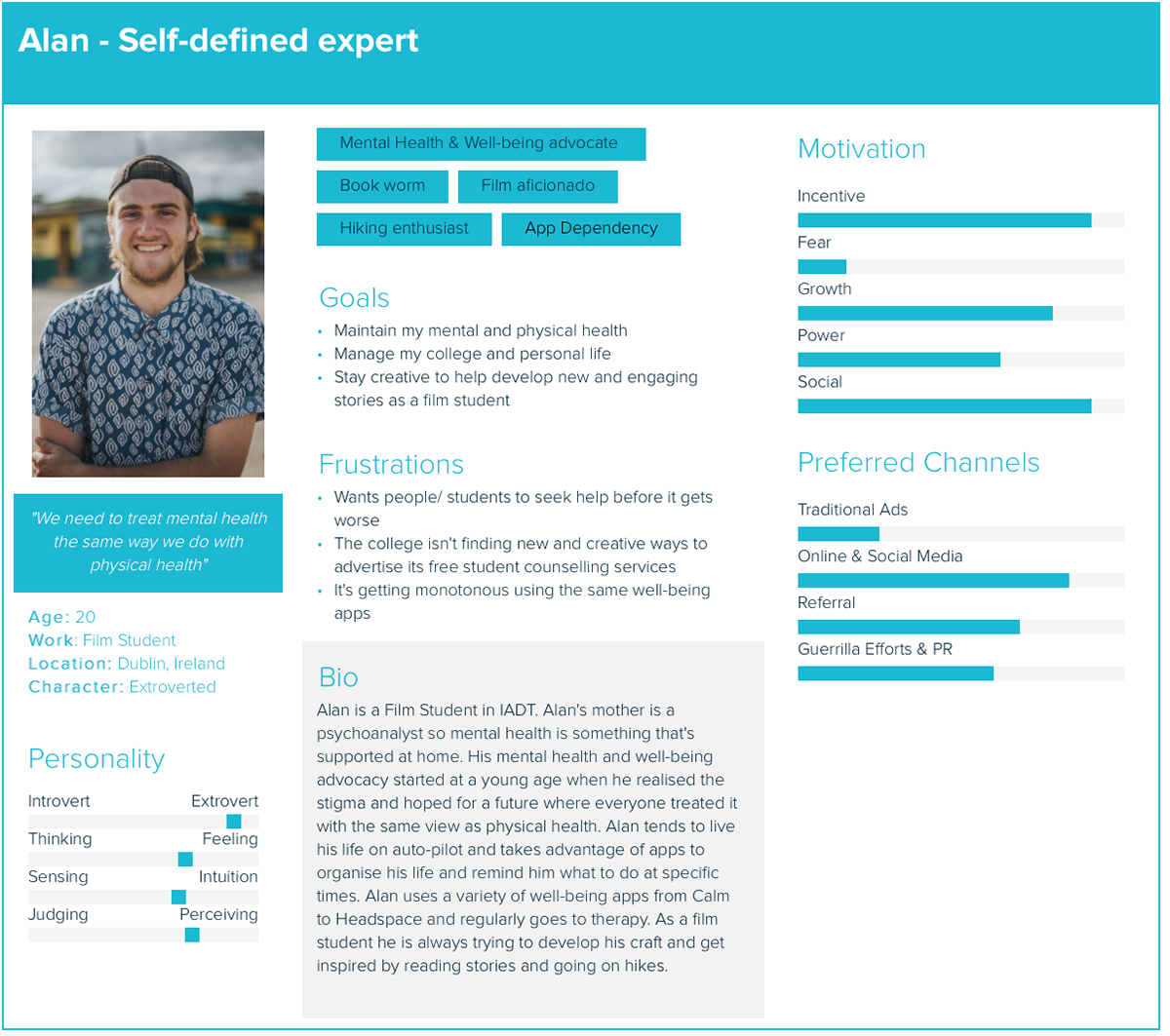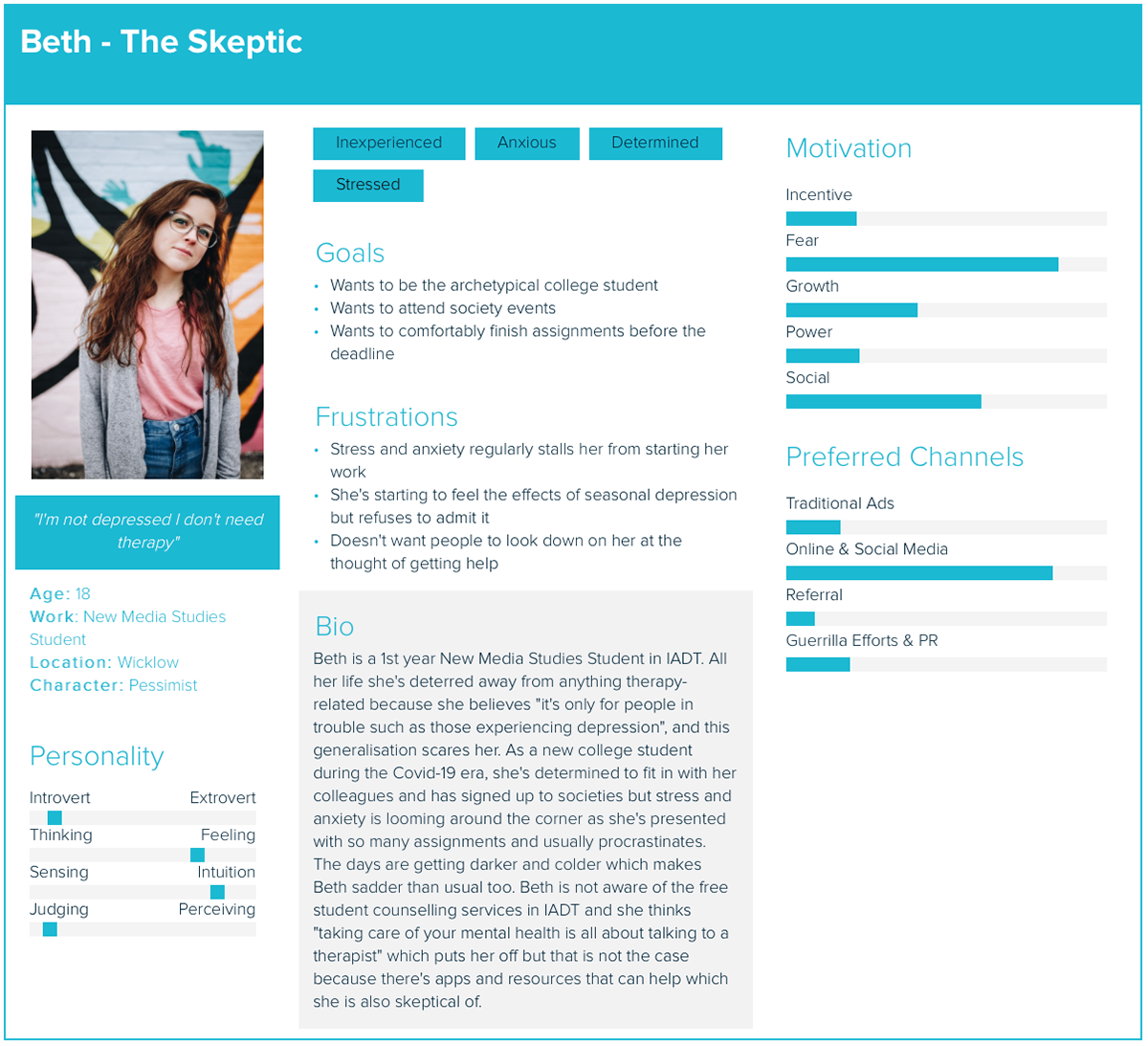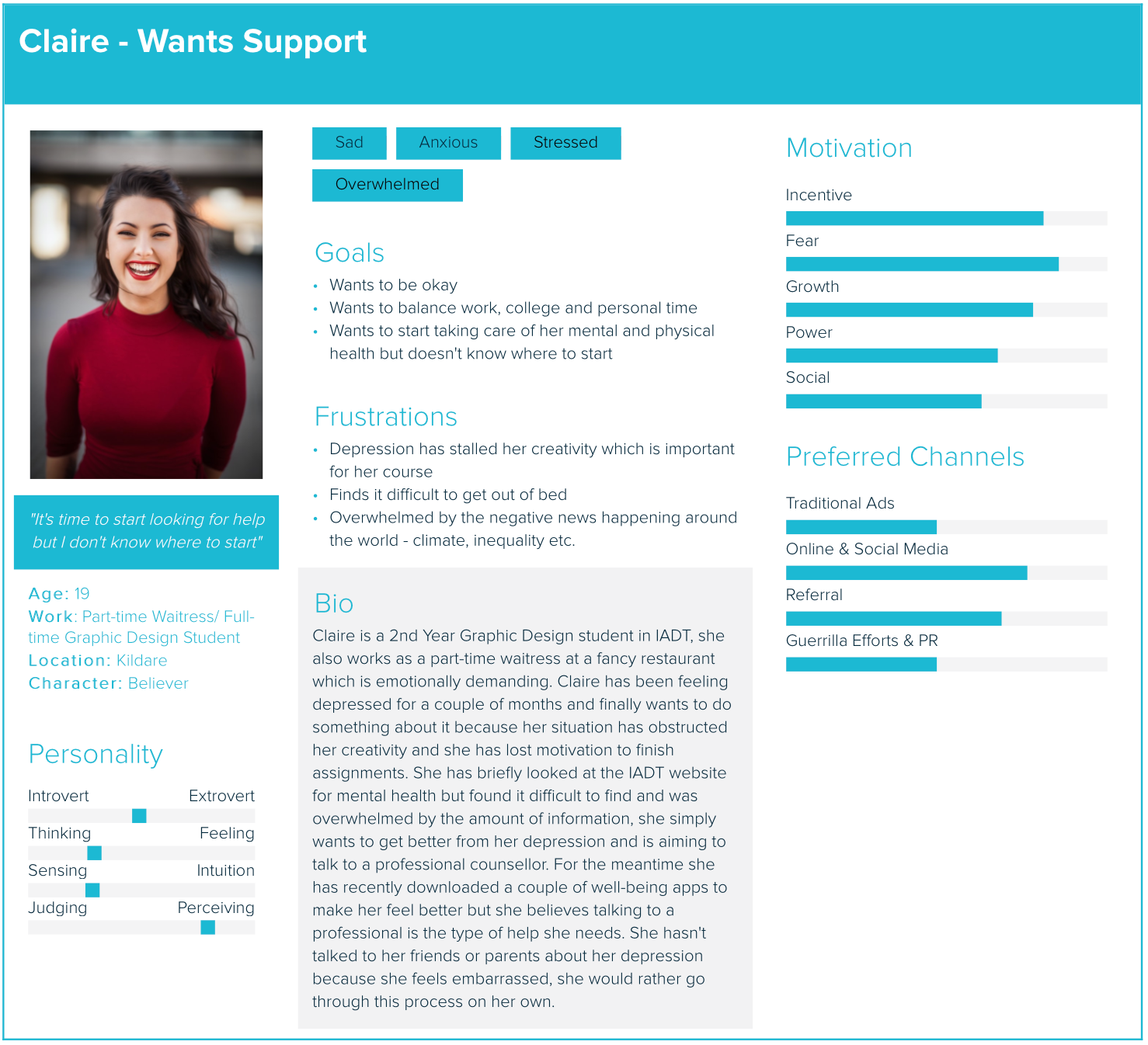This project aims to deliver a mental health app for IADT students, addressing barriers like appointment cancellations and low engagement with counselling services. Using Universal Design principles, the app ensures accessibility for all students, especially those who may be overlooked.
Duration: 8 weeks
Context: Universal Design Module, College Project (Year 2)
Problem Statement
Students are facing barriers to accessing counseling services, as they frequently reschedule or cancel appointments due to anxiety. Additionally, many students are not checking their emails after booking appointments or contacting the counsellor, leading to a lack of engagement with the services and preventing them from receiving the help they need.
Research
Interview Focus: I interviewed the student counselor at IADT, to understand the counselling service and its challenges.
Key Insights:
• The service offers short-term, compassionate support.
• Students face issues with scheduling, low workshop attendance, and lack of awareness about services.
• The pandemic shifted preferences toward remote counselling.
• Student counselling is a short-term therapeutic model and an app should provide a similar experience.
• Existing mental health apps help reduce waitlists for sessions with the student counsellor.
App Suggestion: They suggested creating an app to bridge the gap between sessions, offering on-demand resources.
Ethical Considerations: The app should address concerns like monitoring student risk.
Design Direction: These insights informed the design of a mental health app focused on accessibility, privacy, and ease of use.
Survey (10 IADT Students)
100% have not engaged with the IADT student counselling service
80% have not used a mental health app
60% of IADT students would likely use a mental health and well-being app if available
"Stress", "Anxiety", "Isolation"
Learning about the subject
After synthesising the interview and survey, I researched causes of stress and anxiety, along with coping mechanisms like Cognitive Behavioral Therapy (CBT), journaling, mindfulness, physical activity, and healthy eating.
Ideation
Identifying Pain Points and Planning for Accessibility
Problem Statements
User Stories
Stakeholder Map
Empathy Map
User Personas
All the previous research helped inform three personas and I developed two user journey maps to visualise the app’s use in daily student life.

Someone who regularly uses mindfulness apps, attends counseling, and has a psychoanalyst at home.

Views counseling as only for “troubled” or depressed people, not for everyone.

They recognise the need for help but haven’t taken the step to explore counseling.
User Journey - Alan
User Journey - Claire
Competitor Research
Visual Research
Proposal
Design a mental health app with three key features:
1. Journal – A space for self-reflection, with a history log for tracking thoughts and sharing with the counselor if desired.
2. Mindfulness Exercises – Quick, accessible practices to help manage stress.
3. Student Counselling Booking – A streamlined way to schedule sessions with the IADT student counselor.
These features work together to support student mental health, offering both self-help tools and professional guidance.
Design Process
Site Map
Ideation: Paper Prototype
Challenges
1. Visual Engagement – Add visual elements and personality to make the app more dynamic.
2. Interactivity – Replace static content with sliding interactions for a more engaging experience.
3. User Retention – Introduce daily CBT-based challenges to encourage consistent use.
4. Feature Streamlining – Remove unnecessary features like fitness tracking and app awards.
5. Scheduling & Notifications – Integrate a calendar for bookings, check-ins, and student events.
Early Digital Prototypes
Usability Testing
I conducted usability tests with five participants (IADT students). While the app was well received, recurring pain points emerged. I identified and prioritised the three most critical issues for improvement.
1. Merge ‘Journal’ and ‘Entries’ for Better User Clarity
2. Enhance Access to Student Counseling Services
3. Implement Automated Suggestions for Anxious or Uncertain Users
Most participants tapped ‘Journal’ instead of ‘Entries’ when tasked to look at their journal entries, so I merged them into ‘Journal’.
Participants tapped ‘Local Services’ instead of ‘Reach Out’ to contact the counsellor. I reordered services to direct users to the navigation bar for better guidance.
Participants suggested automated messages as an accessibility feature to support anxious students and those needing guidance.
Final Design
Key Learnings
Strengths
The wellness app effectively solves a problem with a simple, yet robust solution. I demonstrated persistence and a strong workflow, and the goal of increasing engagement was achieved. The journaling and mindfulness history feature is valuable to share with the counsellor, and I showed growth in applying the UX process.
Areas for Improvement
I need to improve the app’s interconnectedness, linking daily check-ins with journaling or progress tracking. Revisit the design system for better consistency and clarity and test the navigation to ensure users can easily find their way.
Next Steps
When presenting, I should focus on the narrative of my project journey, making sure my research and solutions are clearly linked to the project goals. I’ll explicitly connect my solutions to the problems they address and highlight what I learned and how it benefited the project.